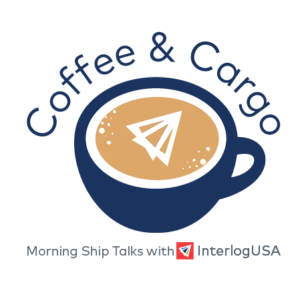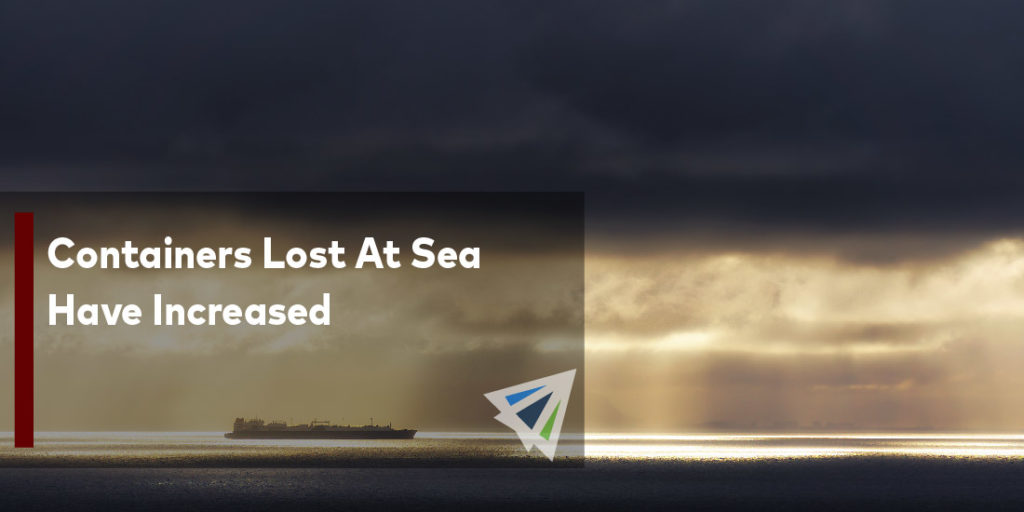Competitive Edge
July 6th, 2022
Stay Current with Interlog’s Weekly Newsletter:
Headlines
- Los Angeles and Long Beach ports said last Friday the two would again a proposed container dwell fee announced last October. The fee has never been implemented. Ironically, FreightWaves reports that the combined number of import containers at both ports dwelling (for nine days or more) has more than doubled since early February to 48,932 as of last Wednesday. In other words, this near the same number (48,905) back on November 15, the day the fees were originally going to be enforced.
UPDATE: U.S./Canada Ports – Number of Vessels at Anchor as of 07-05-22
- Savannah: 39 Vessels at Anchor (+10)
- Houston: 35 Vessels at Anchor (+9)
- New York/Newark: 21 Vessels at Anchor (+5)
- Vancouver: 20 Vessels at Anchor (+4)
- San Francisco/Oakland: 11 Vessels at Anchor (+3)
- Los Angeles/Long Beach: 11 Vessels at Anchor (-2)
- Charleston: 1 Vessels at Anchor (+1)
Note: This does not include vessels moored and being unloaded at port docks.
Courtesy: MarineTraffic
IMPORT: Asia to North America (TPEB)
Recent Developments:
- Shanghai has reopened after its two-month Covid-related lockdown. All businesses in the city have resumed work June 1, including manufacturing, production, and warehousing.
- With Shanghai open for over a month, production at factories has gradually picked up. Insiders forecast improved flows of import volumes into July. Subsequent concerns follow of how this will pressure operations and raise freight rates.
- Contract negotiations between the International Longshore and Warehouse Union (ILWU) and Pacific Maritime Association (PMA) remain active. The existing labor contract between the two parties expired last Friday (July 1).
- Both the ILWU and PMA have commented neither is planning on striking or shutting down operations amid ongoing talks. The two parties state their confidence that there will be no disruptions at USWC ports.
Rates: Rates remain relatively softened, however with a forecasted boom in import activity approaching, shippers can expect increases.
Space: Space is generally open for now, but any surges in demand and volumes will tighten space.
Capacity: Capacity has tightened in pockets. A certain trend of shippers shifting to the USEC has developed due to uncertainty around West Coast (ILWU and PMA) labor talks.
Equipment: Intermodal systems remain stressed with congestion and truck and chassis deficits.
TIPS: Book at least 2-3 weeks prior to ready date. Strongly consider premium services and, if cargo is ready now, make plans to move as soon as possible with the current openings in space and fallen rates.
IMPORT: Europe to North America (TAWB)
Recent Developments:
- Northern European hub ports, such as Rotterdam, are experiencing critical congestion leading to disruptions and logistical challenges. See below in the newsletter for more details.
- USWC ports have seen alleviated congestion and vast improvements to vessel waiting times.
- On the USEC, New York/Newark has seen a steady increase in the number of vessels at anchor, while Savannah has absorbed a significant increase over the last week.
- Recurring challenges with ocean freight have led to higher conversions to air freight among importers.
Rates: Rates remain elevated. What’s been seen in June is expected to stay for July.
Space: Space remains critical for USEC and USWC. However, there have been glimpses of improvements.
Capacity: Capacity for both North Europe and Mediterranean services remain gripped.
Equipment: Equipment remains generally available at European seaports. However, inland terminals in Europe are still reporting equipment shortages. On the U.S. side, truck and chassis availability remain concerning, especially with the latter.
TIPS: Book 5 or more weeks prior to ready date. Shippers are strongly advised to use premium service for no-roll options and improved reliability for their cargo.
EXPORT: North America to Asia
Recent Developments:
- For the USEC, congestion remains considerable at Savannah port.
- Diminished schedule integrity continues to challenge post earliest return dates.
- Vessel arrivals remain smooth for USWC POLs.
Rates: Some carriers have issued limited GRIs for July.
Capacity: Available capacity remains fluid for USWC POLs.
Equipment: Truck, container, and chassis availability remain causes for concern and has significantly contributed to congestion of the intermodal system and IPI origins. Standard equipment at ports remains available.
- Some ocean carriers have noted rail operations from Chicago to USWC ports have become more fluid and can handle an uptick in volume.
TIPS: Book 4 to 5 weeks prior to time of departure to secure necessary equipment and vessel space.
Did You Know: Starting in mid-September, the Port of Vancouver will begin to phase out older trucking serving the Port
The “Rolling Truck Program” will require trucking companies to introduce lower-emission vehicles, which will help improve the air quality throughout the region. Specifically, trucks can be no older than 12 years under the program.
As of now, about 80% of the trucks that are currently serving the Port are already compliant with the new requirements. That leaves the remaining 20% (around 1,800 vehicles), not in compliance with the environmental standards.
Source: Journal of Commerce
Freight News
Congestion levels in Northern Europe have been labeled ‘critical’
Even with the slowing of import volumes into North Europe, some of North Europe’s hub ports have been dealing with significant congestion, some even labeling it as ‘critical’, due to ongoing driver shortages, disruptions to inland rail and barge services that have not eased with the slowing of import volumes and worsening economic conditions, Journal of Commerce reports.
A multitude of operational challenges and inventory delays have causes boxes to be stacked up at container terminals, prompting some warnings to shippers that containers may be moved to off-dock facilities if not collected within reasonable time frames, the JOC reports.
Furthermore, intermodal services are an important part of Europe’s import supply chain however, deep-sea vessel schedules have been disrupted with delays being the effect of the cause – with service providers struggle to keep up with the congestion throughout barge and rail services. Specifically, average port hours of the deep-sea vessels throughout North Europe hubs in the first 5 months of the year have increased by 20 percent year-over-year, to 52 hours – reports show.
Specifically, the JOC notes that average wait times for barges in Rotterdam and Antwerp have improved in June compared to May, but still are above pre-pandemic levels. Last week the wait times for Rotterdam was 56 hours and 51 hours in Antwerp.
What does the outlook look like for rail service in the 2nd half of the year?
Rail service has been a continued issue throughout the first half of 2022, with many stakeholders looking on to see how the outlook of rail service will look like for the 2nd half of 2022.
Back in April, the Surface Transportation Board (STB) held a hearing to dive deeper into the causes of this years’ service issues and tasked the four big U.S. Class I railroads (BNSF, Union Pacific, CSX, and Norfolk Southern) to put together data to submit to the board on what their plans are to improve the service issues. The freight railroads have stated they are continuing to add on more employees and improve their hiring efforts to help with the service issues and to be able to support the current market demand. Additionally, the STB has been asked by some members of the House and Senate to respond to the ongoing service issues, Freightwaves reports.
Intermodal trains that have been held per week on average have appeared to be significantly higher than what they were during the summer in 2019, and reports show are basically at the same level as they were in June 2021. Train holding, as defined by Freightwaves is when departures have been delayed due to congestion or the lack of a critical resource such as available crews or locomotives.
There are some unknowns that could occur in the second half of the year, as some experts wonder if we could see a potential recession. The National Retail Federation says they are seeing “softer” economic data, but they still are seeing signs of economic growth. According to Freightwaves, an economic contraction can be of benefit for the freight railroads. If there is a drop in consumer-driven volumes, that could be one thing that could help the railroads “catch up.”
Lack of warehouse and drayage capacity continue to be issues for the railroads to move containers efficiently and effectively, especially on the U.S. West Coast.
Watch last month's webinar!

We discussed import conditions, what the second half of summer looks like/what to expect, current events and had a live Q&A with our experts!
Sign up for our
industry answers
Our team works to provide valuable, unique, and relevant content to assist you in finding solutions. Sign up now.
